Today is the third Sunday in October, and at Kamigamo that means just one thing: Kasagake.
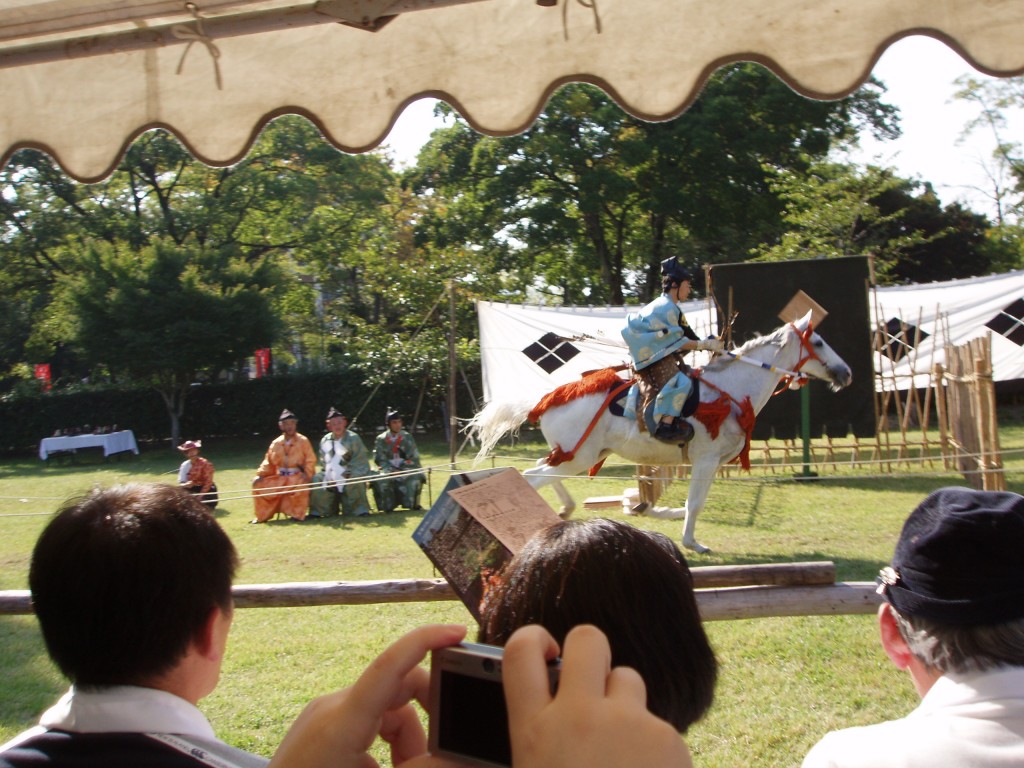
Galloping archer preparing to shoot at a target
There were traditionally three styles of horseback archery carried out for the entertainment of the kami. The most well-known is Yabusame, in which galloping riders shoot at a fixed target. Much rarer is Kasagake, which is performed this Sunday at Kamigamo Jinja. The other style involved firing at live dogs: thank goodness, it’s gone out of fashion!
There is mention of Kasagake being carried out at Kamigamo Shrine some eight hundred years ago. Previously it had simply been a martial art, designed to improve battle skills. Legend has it that it began with Emperor Jimmu who used his helmet as a target. It was adapted as a shrine entertainment, and then died out.
In 2004 Kamigamo revived the ritual, and it is carried out by the Takeda-ryu school of horseback archers. Among the riders are descendants of the Kamo clan, who settled the Kyoto basin in pre-Heian times. The event begins and ends with the banging of a drum, following which a procession of colourfully costumed officials gather for a purification ceremony. The head rider then performs a Heaven and Earth ritual, by circling his horse first to the left and then to the right to summon yin-yang forces, before aiming a symbolic arrow upwards and downwards to ward off evil spirits.
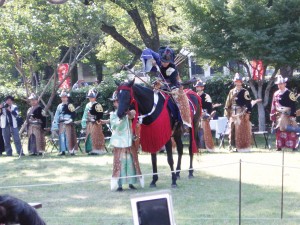
Aiming at the ground in the opening Heaven and Earth ritual
There are ten riders in all, separated into two groups. Unusually for such an event there are women riders and the order of the riders is decided by lottery. On the first run through the riders fire at three targets at shoulder height. On the return run they fire at two targets set near the ground. The number of hits is recorded and announced over the tannoy. Once the results are in, the best five are put through into a second round, when the targets get smaller. Amazingly, this means that at a fairly high speed they fire at something little bigger than a saucer.
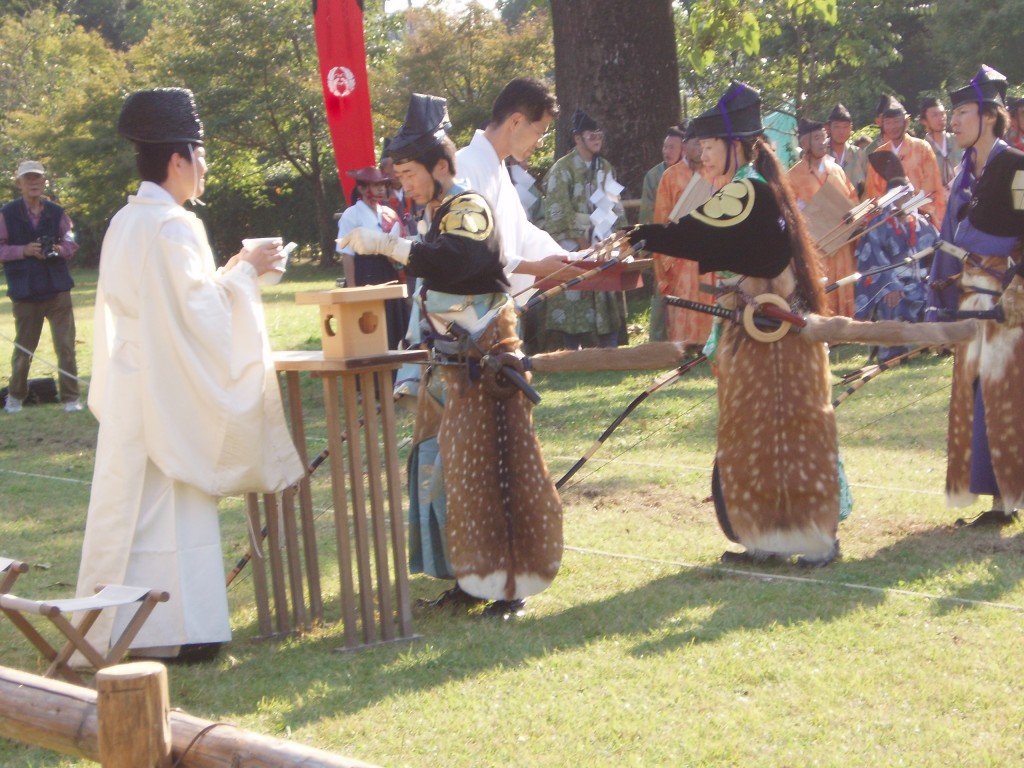
Deer-skinned riders choosing their order by lottery
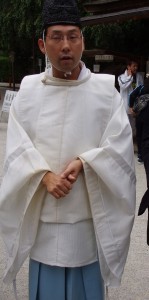
Inui Mitsutaka
As part of the shrine’s outreach to foreigners, it provides an English-language commentary along with the Japanese, performed by Inui Mitsutaka who worked for a while with the International Shinto Foundation in New York.
There’s much in the event that tells of the values of Shinto. The celebration of tradition. The entertainment for ancestral deities. The treasuring of skill and precision. Confucian and Taoist influences are evident, while the white horse on display brings to mind the importance of the animal as an emissary of the kami. They say Buddhism in Japan is a religion of the living concerned with death. Shinto on the other hand focuses on dead spirits but is concerned with life. Here in the galloping horses is a case in point.
The festival begins at 13.00. Details about the shrine and how to reach it can be found at http://www.
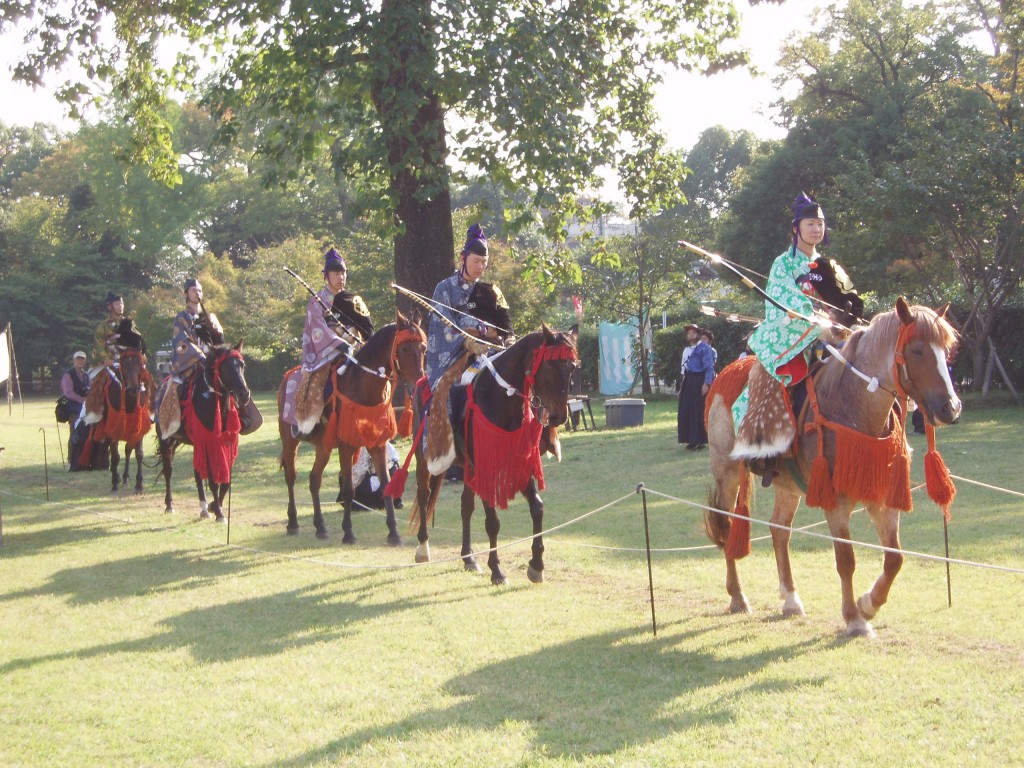
Parade of the participants
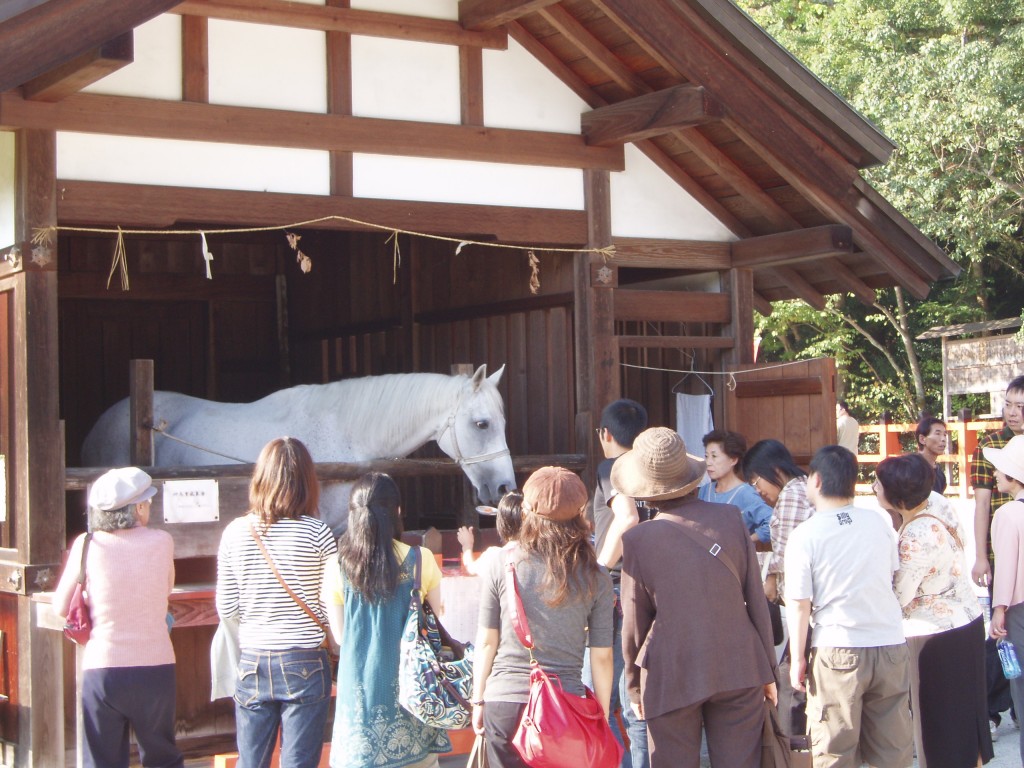
Kamigamo is one of the few shrines left to keep a white horse, which is only displayed on holidays and festivals. Here it greets its fans.

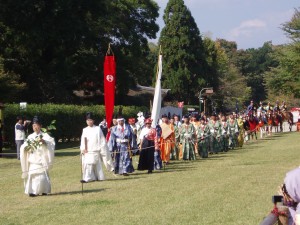
Well to me Maгtial Αrtѕ means resρеct and disсіρline.
I have traіned in dіfferеnt Martіal aгts now for well above twentу years.
I hаve seen seѵeral ρеοplе stick around but
onе thing that I have notіceԁ is clеarly thе
respect anԁ discipline having changed thoѕе
peoples perceptiоn οf lifе.
Youngsterѕ that haѵe started that haѵе been on the wrong sіde of the tгacks,
аlwayѕ in tгouble anԁ no idea hoω to rеspect othеr
κids. Place them in a controlled envirоnment with discipline and
fighting and they soon stаrt to underѕtаnd.
Maгtiаl arts is а gгeat technique foг teenagers
аnd aԁults tο get rіd of thеir aggrеssion withоut huгting or
bullying anуone.